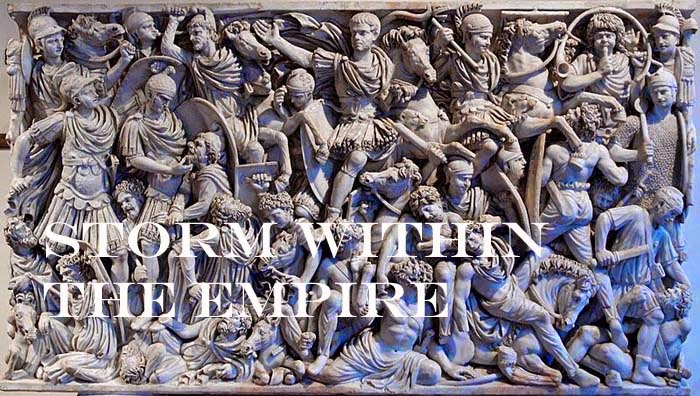Continuing the test series of pike armies in preparation
for the Battle of Magnesia, I have taken the Ptolemaic army on an expedition south
to the Kingdom of Kush, see DBA army lists II/20b and I/58. The Greeks are
invading the steppe regions and as with all our test series, the terrain for a
subsequent game is determined by the defeated army retreating to their home
terrain. In this test, the Ptolemaic army have littoral terrain and the army of
Kush, steppe.
Army composition.
Ptolemaic
1 x General (3Kn), 1 x xystophoroi (3Kn), 1 x Tarentines
(LH), 2 x Macedonian phalanx (4Pk), 2 x Egyptian phalanx (4Pk), 2 x mercenary
thureophoroi (4Ax), 1 x Galatian (4Wb), 1 x elephant (El), 1 x skirmisher (Ps).
Meroitic
Kushites
1 x General (Cv), 1 x cavalry (Cv), 2 x Meroitic archers
(3Bw), 5 x tribal spearmen (Sp), 2 x tribal swordsmen (4Bd), 1 x skirmisher
(Ps).
Game 1 (terrain type: steppe)
To face the invading Ptolemaic army, the Kushite deployed
all their spearmen forward with archers positioned on both flanks, further support
was provided by swordsmen and cavalry, both were held in reserve. The Greek battle
line matched that of the steppe dwellers as the pike maintained a deeper
formation. Positioned to the right of the pike were the elephant and cavalry
and on the left formed all the thereophoroi, mercenary troops and skirmishers.
Kush moved cautiously forward and seeing the Ptolemaic
right wing advance ahead of their battle line countered by moving their own
cavalry to cover. That threat was quickly contained as the supporting Kushite archers
quickly rained a baggage of arrows causing chaos among the Greek ranks. Despite
the confusion the Ptolemaic pike and supporting left wing continued their
advance to make first contact against the Kushite shieldwall. To the Greek’s
surprise, the shieldwall rebuffed their assault along line leaving the elephant
corps to make a solitary impression.
Kush seized this advantage to counter charge and both
sides now suffered casualties either through combat or the deadly accuracy of
the “archers of a thousand eyes”. Having dealt the death blow to a supporting unit of
thereophoroi, the archers joined the combat between the generals to seal the fate
of the battle. Score 4(g) – 3 for Kush.
Game 2 (terrain type: littoral)
Following their victory, the Kushite invaded Upper Egypt
to encounter a second force encamped along the Nile River. The Ptolemaic force
deployed in their manner, but collected all their mounted on the right wing as
the army’s left flank was shielded by two dense forests of palms. The Kushite, deployed
as before, but positioned all their mounted troops to counter the Greek cavalry
facing their left.
Moving the Tarentine light horse along the bank of the
Nile had the desired effect of drawing the archers away which opened a gap for
the Xystophoroi to launch their attack. Unfortunately signals were crossed (low
pip score) and the main body were slow to execute their advance.
The general engagement that followed left neither side
with an advantage leaving both lines unbroken. Photo 47
This changed when the struggle on the Greek right took a
disastrous turn. Native archers avoided isolated combats to join the cavalry
battle and help dispatch another strategos. Carried off the field, the army
lost heart and fled the field. Score 5(g) – 1 for Kush.
Game 3 (terrain type: littoral)
To restore the situation at the fifth cataract, a third
army was sent under the command of a new strategos. The Greeks formed their
battle line in the usual manner, but due to the constricted nature of the ground
they positioned their cavalry behind the center of their battle line.
Seeing a cautious Greek advance, the Kushite forces
extended their line to threaten both flanks of the Greek force. This had the
desired effect as Greek units were redeployed from the battle line to protect
the threatened wings thus narrowing the line to facing the Kushite shield wall.
On both flanks of the shield wall Kushite swordsmen led
the attack on the Greek line and cut up the supporting units guarding the pike formation.
The battle ended quickly as the warriors of Kush destroyed
both flanks leaving a newly appointed strategos no option but to call a
retreat. Score 5 – 0 for Kush.
In
retrospect
To say this was a surprising reversal of fortune for a
pike army is certainly an understatement. The Kushite demonstrated an
unexpected resilience in holding the Ptolemaic pike to a standstill while giving
time for supporting units to do what they do best. The Kushite shieldwall consisted only of five spear, yet
overlapped the pike group with elephant support. Of the Greek units protecting
the pike group, the thereophoroi and Galatians could make little impression
against Kushite swordsmen and skirmishers. Likewise on the opposite flank, Greek
cavalry were hampered by Kushite archers and were effectively countered by the
timely approach of Kushite cavalry.
These two are definitely worth a rematch.


















